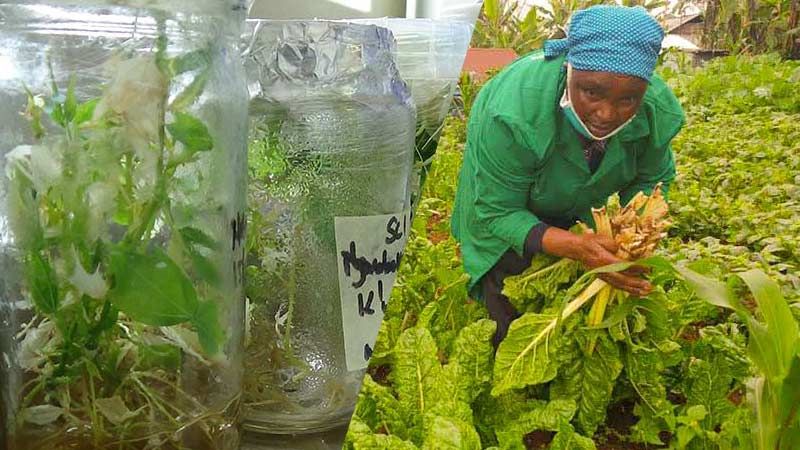
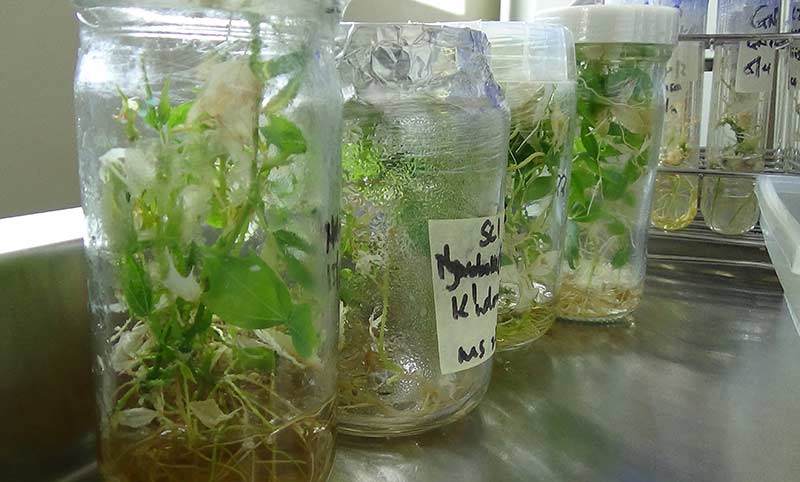
Scientists use modern breeding methods such as tissue culture to multiply varieties faster than conventional breeding methods
The United Nations Committee on World Food Security defines food security as a situation where all people in a given area have physical, social and economic access to sufficient, safe and nutritious food that meets their food preferences for an active and healthy life.
Over the past decade or so, many ordinary farmers especially in developing countries including Uganda, have been thrown into a polarizing debate about what steps to take to achieve food security in a hotter and more populous world.
With the challenges of climate change and rapid population growth now generally accepted as real challenges to mankind, many people including farmers and food consumers have been presented with contrasting views that have complicated their choices on how to feed their families or even launch successful agribusinesses in an environment of acrimony and uncertainty.
On the one hand, is a group that has advocated for the adoption of modern agricultural technologies such biotechnology that involves use of biology to solve environmental stresses such as pests, or develop useful products such as vitamin-rich bananas.
Advocates of biotechnology have cited the successful agricultural experiences of many of the developed countries in the 1970s and 80s that came to be known as the green revolution, to argue that those countries achieved food security and indeed economic development through agricultural transformation that involved increased use of improved seeds, fertilizer, herbicides and mechanization along with vigorous farmer extension services.
They attribute a great deal of the economic progress of most Asian countries, including China and South Korea, to the successes of the green revolution that pushed up productivity, ended food shortages and spurred industrialization by connecting agriculture to industry through value addition. Other economic policies such as construction of special processing zones and construction of fast and efficient transport infrastructure, facilitated market access.
The Food and Agricultural Organisation (FAO) in its 2015 study on the impact of Diversification, Farm size and Mechanization on Agricultural Transformation of 6 Asian Countries; China, Indonesia, Malaysia, Philippines, Thailand and Vietnam, notes that increased mechanization, which came alongside improved seed and fertilizer use in those countries, led to increased labour productivity, reduced post-harvest losses and greater food security.
Also, in its 2013 report on Agriculture and Structural Transformation in Developing Asia; the Asia Development Bank concluded that: “The most successful Asian economies have pursued an agriculture-led industrialization pathway.”
The current effect of high food prices arising from the ongoing war between Ukraine and Russia, where such industrial farming has been disrupted, would serve, perhaps, as a perfect example to illustrate how industrial farming supports the world’s food needs.
On the other hand, another group that has come to be known as the agroecology movement, comprising mostly the civil society and movements of smallholder farmers, has gained momentum in recent years by opposing industrial farming as characterized by consistent use of improved seed, mechanization, and use of chemical fertilizer. Instead, they have advocated for use of saved seed, organic fertilizer, diversity in food and decentralized marketing.
This group has coined new terminologies such as organic farming or conservation agriculture in building an ideology that opposes most of the principles of the green revolution. On the contrary, they advocate for self-sufficiency and non-chemical use to produce food – whose result they say promotes food safety, biodiversity and food sovereignty.
The agroecology movement is also opposed to the influence of big private companies in producing and marketing of seed and food.
The agroecology movement started as a response to the negative consequences of vast monoculture farms in the West, South America and Asia, including excessive use of chemicals that damaged ecosystems, dominance of multinational corporations that deal in seed and other chemicals as well as purported link in the rise in some diseases to the model of food production.
Uganda and indeed many African countries have been caught between the two powerful forces, for better or for worse.
For now though, it is safe to argue that the agroecology movement has gained an upper hand in influencing the policy and legal framework of Uganda, considering the radical restrictions that were imposed on the adoption of genetically modified seeds under the Genetic Engineering and Regulatory Act (GERA).
The resistance to change, and generally to science, in a rapidly developing world where science is the driver of change, has left the agroecology movement exposed to criticism as a colonial outfit that seeks to keep millions of poor Africans in perpetual poverty, hunger and continued reliance on the west for supply of scientific goods, as the continent ravels in notions of food sovereignty.
The pursuit of food sovereignty has also coincided with under-investment in Uganda’s agriculture as shown by very low budgetary allocations to value addition and linkage of agriculture to industry, despite government rhetoric on the subject.
Historic precedents also suggest that food sovereignty as an idea is based on shaky ground. Food is a universal good and that multiple forces ranging from farmers selection, deliberate research, trade and conservation efforts, have taken different food items to different parts of the world where transformation continues.
Arthur Makara, the Coordinator of the Uganda Biotechnology and Biosafety Consortium (UBBC), argues that the sovereignty debate is misplaced when it comes to food.
“The use of words like food sovereignty is meant to arouse nationalistic sentiments about food, which is misplaced. Evolution of food has been taking place and continues to take place deliberately, or because of environmental factors, regardless of geographical boundaries. It’s important to note also that scientists work in a global fashion. All these crops have international centres of collection and conservation. Scientists can move them to different places and generate new varieties.”
Indeed, most of the food crops grown in Uganda and considered as indigenous crops, are not native to this part of the world, but were introduced by traders and colonialists.
Needless to add that many of the crops that were introduced here, have undergone enormous transformation due to environmental and human factors that they are radically different from their original relatives.
Dr. John Waswa Mulumba, the head of the Plant Genetic Resources Centre (also known as the plant gene bank) located in Entebbe next to the Botanical Gardens, argues that thanks to environmental factors and human selection, the East African Highland Bananas, also known as Cooking bananas, have taken on a life and character of their own, far different from their wild relatives from South Asia where they originated.
He says: “The story of the bananas is very interesting because the ones that exist in Uganda now do not occur anywhere else in the world. The evolution has been influenced by our unique climate, soils and human activity has given us the unique appearance and taste that we know of bananas. The East African highland bananas are seedless compared to their relatives.”
Maize, another important staple crop for Sub Saharan Africa, has undergone enormous genetic transformation from its earliest relative known as teosinte, a grass that bore a handful of hard grains. The many maize varieties cultivated today all over the world bear hundreds of grains on numerous cobs.
In his book titled Hybrid; The History and Science of Plant Breeding, Noel Kingsbury observes that it was science of controlled experiments rather than trial and error that yields in maize were eventually improved through the process of hybridization.
“The Science led to the development of hybrid corn by 1920s – this was a turning point, not just because of the coming together of science and technology, but also because of the importance of the crop.”
Kingsbury shines light on the breathtaking history of improvement of most major crops of the world by noting that most of them are a result of deliberate selection and improvement by enthusiastic farmers, priests and or by movement of crops to environments that suited food formation as we know them today.
Makara argues that such terminologies as food sovereignty are coined by the agroecology movement to cause fear and anxiety among farmers and consumers in an attempt to stifle deliberate and beneficial technologies such as genetic transformation to take place.
A movement against Africa’s progress?
Advocates of biotechnology have accused European countries of propping up the agroecology movement with selfish interests to hold back Africa’s wheels of transformation and therefore keep the continent in perpetual poverty through limited production.
Peter Wamboga-Mugirya, the Director of Communications at the Science Foundation for Livelihoods and Development (SCIFODE) argues that “food sovereignty notions are largely a western plot especially by Europe meant to frighten Africans towards the science of modern biotechnology particularly its application in agriculture so as to deny Africa the opportunity to build a more resilient sector where the continent has a competitive and comparative advantage over the rest of the world.”
Biotechnology’s role in food security
The United Nations has projected that Africa’s population will reach 2.5 billion by the year 2050 and 4.3 billion by 2100. Not only will human settlements displace farms in decades to come, current rudimentary, low yield and rain-fed food production systems are projected to collapse under the weight of high demand for food in the years to come, unless societies increase food produced, but also ensure that the food is produced in a more sustainable manner. In addition, the impact of climate change will likely worsen famines and disease outbreaks that will keep millions of people on the continent hungry and sick.
Experts have argued that only through the use of modern tools like biotechnology, is the world really able to counter the new challenges such as pests and diseases as well as the need to add value to the food that is produced and be able to keep it.
The development of vaccine against the SARS-COV-19 virus – using biotechnology – in less than a year since the disease broke out, has been raised as a good example of the power of the science in addressing challenges facing humanity. Previous methods of vaccine development would take at least 10 years to be able to complete the process.
Techniques similar to those employed in the development of human vaccine against SARS-COV-19, have been used to develop varieties that are resistant to diseases such as the Cassava Brown Streak virus, that is ravaging cassava in Uganda and other parts of East Africa.
Critics blame the reluctance by most African countries to embrace such useful tools, despite the availability of the technology on the continent for over a decade, and the availability of technical and human capacity, for the stubbornly high levels of hunger and malnutrition.
According to the UN Food and Agriculture Organisation 2021 report, 281.6 million people in Africa, over one-fifth of the population, faced hunger in 2020. It was a sad reality of the deteriorating trend that started in 2014, of the rising number of people who are unable to find adequate and nutritious food.
Biotechnology in value addition
Biotechnology and genetic engineering in particular, remains one of the most divisive topics in agriculture, even though its application in other areas such as health and industry has attracted a dramatically and surprisingly opposite response; one of praise and overwhelming government support more so in countries that opposed similar technologies in food production.
The use of biotechnology tools in a growing number of countries outside Africa, over the past three decades has been associated with increased productivity arising from higher-yielding varieties such as hybrids but also drought tolerant and pest resistant varieties that are able to withstand hash climate and other environmental stresses.
The adoption of maize hybrids, herbicide tolerant varieties in the United States and several other countries in South America and Asia has coincided with a significant increase in agricultural productivity and food security.
Experts argue that Uganda and other African countries urgently need to transform their agriculture through mechanization and adoption of modern technologies such as biotechnology if the continent is to face up to the critical challenges of under-development, unemployment, persistent food shortages arising from rapid population growth rates and effects of climate change.
Dr. Akinwumi Adesina, the President of the African Development Bank, an agricultural biotechnology enthusiast and self-proclaimed mentee of Norman Borlaug, considered the father of the Green Revolution said during his Keynote speech at the 94th Annual US Department of Agriculture Outlook Forum in 2018 narrated that he chose to pursue a career in agriculture despite opposition from his father because agriculture has enormous potential.
“Because agriculture has the potential to completely transform Africa and feed the world. But as my mentor Norman Borlaug always said: “You can’t eat potential”. You can only leverage, transform and use it.
Dr. Adesina added: “We must now turn the rural areas from zones of economic misery to zones of economic prosperity. This requires a total transformation of the agriculture sector. At the core of this must be rapid agricultural industrialization. We must not just focus on primary production but on development of agricultural value chains.”
Uganda’s dismal yields are partly attributed to outdated habits of relying on farmer-saved seed, low fertilizer usage and climate stresses especially drought, and low levels of mechanization. Because of the shameful low yields, farming has become a poverty trap for millions of people in Uganda.
And because of declining agricultural productivity and general marginalization of the sector that employs majority of the population, many young people have abandoned the sector and ventured into the services sector such as Boda Boda (motorcycle taxis) that operate in urban and semi-urban areas and are considered a less stressful and more rewarding business than farming.
Missed opportunities
Deborah Wendiro, a retired former scientist with the Uganda Industrial Research Institute (UIRI), talks with immense disappointment about the fact that the government of Uganda refuses to embrace biotechnology. She notes that a country that is predominantly agricultural, cannot close its doors to such a beneficial tool that would unlock the sector to innovations and industrialization.
Using the example of Cassava, Wendiro notes that Uganda could use biotechnology to produce large quantities of lactic acid, which she says is a key input in food processing but also in the making of other high-value products.
Wendiro says: “Uganda would come out of poverty, if we put emphasis on using biotechnology to add value to our produce, especially since we are an agricultural country. Why is it that we grow a lot of cassava but we can’t produce mere sugar out of it? Why does Uganda import 100% of its Lactic acid needs when it could produce all of it locally? There are a lot of things biotechnology would do to cause industrialization. They say that lactic acid is the precursor for industrialization because once you have it, you can make many other chemicals.”
Biotechnology and food safety
Food security in not only about access to adequate food but also access to safe food. Biotechnology has proved to be a powerful tool in ensuring food safety. According to Wendiro, a team of researchers at UIRI succeeded in developing an aflatoxin sensor which uses anti-bodies developed through biotechnology, to test for the presence of the chemical in maize and other grains.
Uganda loses hundreds of tons of produce including maize, ground nuts, millet and each year to aflatoxin contamination, which greatly undermines the country’s export potential for grain and processed food.
Unfortunately, Wendiro says, the government has failed to support the production of the aflatoxin sensor roughly 10 years since it was invented.
Win-win possible with open-minded approach
There is increasing realization that intensification and use of modern tools such as biotechnology and agro-ecology are not conflicting targets. Indeed, both approaches can reinforce each other in a mutually supportive way to achieve food and nutrition security.
As Dr. Mulumba observed, conservation of indigenous varieties either in cold-storage vaults or on farms, has provided researchers seeking to find solutions to emerging challenges such as pests and drought using biotechnology, with invaluable source of genetic material to pick from.
At the same time, countries such as Uganda that are endowed with a rich diversity of food and other organisms, can use its natural wealth not only as food but also as a tourism attraction. An open-minded approach to both approaches, would likely be a win-win for the current and future generations.






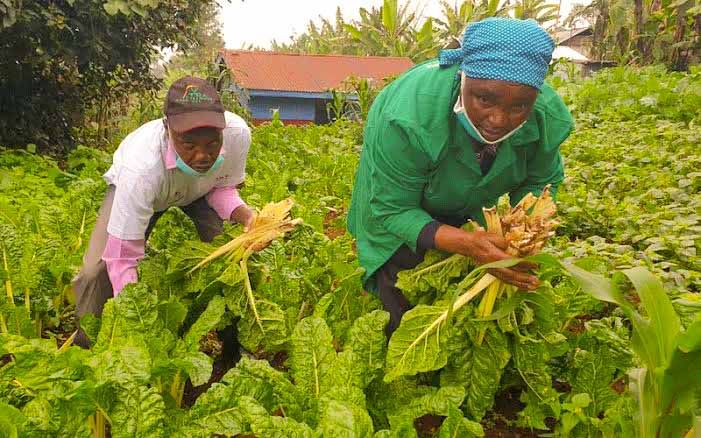
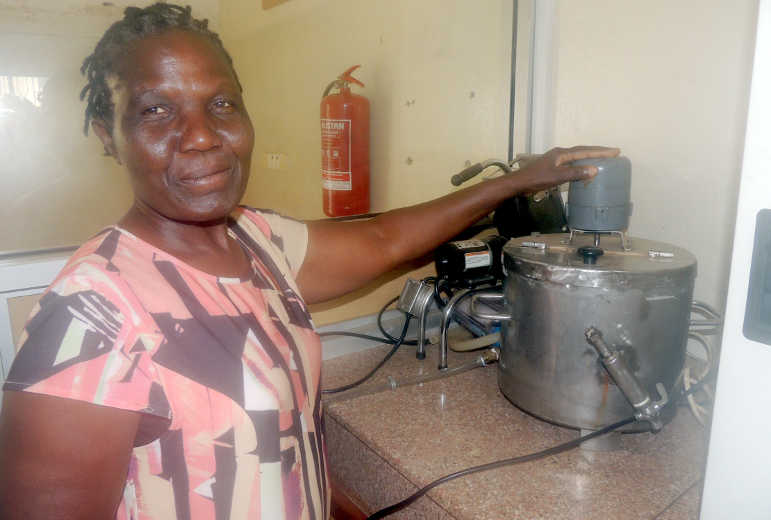


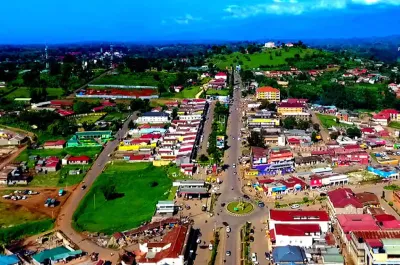





Henry Lutaaya
Leave a Comment
Your email address will not be published.